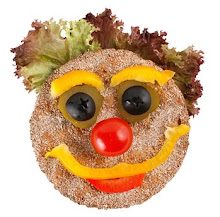I’m a long way from my teen years, but I can still remember the things I used to think when I looked in the mirror: "I’m too fat," "I'm too tall," and "why is my butt so big?" I spent hours cataloging my flaws and, if I missed any, my older sister was kind enough to help me out.
What I remember most is wanting to fit in. And from talking to some of my teen clients and reading some of the comments1 from other teens on this site, that hasn't changed much since I was in school. What also hasn't changed is the idea that weight and appearance play a role in being accepted. So, what do you do if you don't have the ‘ideal’ body? What do you do if you're overweight, underweight, or just want to get rid of a little excess fat? Is it possible to change your body?
Things that Affect Your Weight
You can change your body, but how much depends on a number of things--some you can control and some you can't:
- Puberty Though you may not realize it, puberty can have a major affect on your weight and the shape of your body. Both girls and boys can expect to gain weight as well as height during puberty. Hormones released during this time often cause boys to gain muscle and girls to experience an increase in body fat. These changes are normal but may make you feel like you're overweight, even if you're not.
- Genes One question I hear a lot is, "Why don't I look like my friends?" One reason is your genes. You inherit a number of things from your parents such as where you store excess fat on your body, how tall you are, and the shape of your body (such as being pear-shaped or apple-shaped). In fact, if your parents are overweight, that increases the risk that you'll be overweight as well.
- What you eat While puberty and genetics are things you can't control, what you eat is another story. Eating french fries, fast food, sodas, chips, and sweets on a regular basis and avoiding fruits and vegetables like the plague can add excess calories without much nutrition.
- Exercise One reason weight can be such a problem for everyone from teens to adults is all the sitting around we’re doing. Inactivity has a major affect on your waistline and your health. In fact, watching TV is the most common activity that can lead to weight gain (if you don't exercise or eat right) and is something teens usually do more and more as they get older.
Do You Really Need to Lose Weight?
This may seem like a no-brainer, but not everyone needs to lose weight. Too often, teens focus on getting their weight down to unhealthy levels in order to get that 'ideal' body--something that can lead to yo-yo dieting5 or even eating disorders6.
It’s easy to have a distorted view of what your body should look like, especially if your models tend to be, well, models, celebrities, or other people who are often known more for how they look than what they do. So it's important to understand what a healthy weight range is and, even more important, that your scale weight doesn't always tell the whole story. A scale weighs it all--your bones, fat, muscles, internal organs, what you ate or drank earlier...everything. It doesn't accurately tell you what you've gained or lost, so using a scale as your only method of tracking progress7 isn't always the best idea.
Before you decide to go on a diet or weight loss program, take some time to figure out if you’re really overweight or if you have a distorted body image. Use the following resources to figure out what a healthy weight really is:
 Her concerts alone will keep her in decent shape - but you don’t get that body without working out. Fergie and her trainer, Natasha, recently shared her awesome
workout tips. Check it out below - and then get off the couch!
Cardio training: A half-hour, 3-to-5-mile run or a 45-50 minute 5-mile run. Not necessarily at a very fast pace, however.
Her concerts alone will keep her in decent shape - but you don’t get that body without working out. Fergie and her trainer, Natasha, recently shared her awesome
workout tips. Check it out below - and then get off the couch!
Cardio training: A half-hour, 3-to-5-mile run or a 45-50 minute 5-mile run. Not necessarily at a very fast pace, however. Her concerts alone will keep her in decent shape - but you don’t get that body without working out. Fergie and her trainer, Natasha, recently shared her awesome
workout tips. Check it out below - and then get off the couch!
Cardio training: A half-hour, 3-to-5-mile run or a 45-50 minute 5-mile run. Not necessarily at a very fast pace, however.
Her concerts alone will keep her in decent shape - but you don’t get that body without working out. Fergie and her trainer, Natasha, recently shared her awesome
workout tips. Check it out below - and then get off the couch!
Cardio training: A half-hour, 3-to-5-mile run or a 45-50 minute 5-mile run. Not necessarily at a very fast pace, however.









